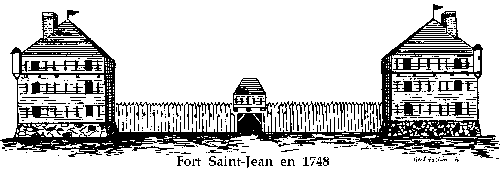The Siege of Fort St. John was the first victory in the Canada Campaign, led by General Richard Montgomery and Benedict Arnold. The first battle was the surprise capture of Fort Ticonderoga, which gave the Continental Army much-needed weapons to drive the British out of Boston. The Americans hoped to surprise the British to capture Canada and influence them to join the 13 colonies in the American Revolutionary War.

Siege of Fort St John Overview
Date of Battle: September 4 - November 2, 1775
Region: St. John, Quebec Province, Canada
Opposing Forces: British: 800; American: 2,000
British Perspective: By September of 1775, the American forces had advanced to the British stronghold, Fort St. John. General Guy Carleton, the British commander in charge of troops in Canada, began preparation for a siege. He placed 800 British troops in the stronghold that consisted of British regulars and Indians. Carleton had limited resources and knew he would have trouble sustaining a long siege from the Americans. He placed Major Charles Preston in charge of the fort.
American Perspective: Colonel Benedict Arnold had successfully launched many naval raids across Lake Champlain and captured 4 British ships. These attacks gave the Americans complete control of the Lake. Meanwhile, Richard Montgomery had begun to set up a base at Isle aux Noix. The Americans hoped to push the British out of Canada and, in doing that, admit them as the 14th colony.
Siege of Fort St John: The Fighting
The siege of Fort St. John lasted close to two months and was a slow process that eventually led to an American victory. There were three different attacks that failed to capture the fort but managed to seize valuable supplies that helped bleed the British. After the failed attempts, the Americans' morale dropped until reinforcements arrived.
General Montgomery continued to build trenches to squeeze the fort. The British held up well, but the arrival of American artillery made the fort impossible to defend. Major Preston tried to rescue some of his men but was repelled by the Green Mountain Boys. The Americans then infiltrated the fort and captured several hundred British.
The capture of Fort St. John was the first victory for the Americans during the Canada Campaign.
The British lost 43 men, and several hundred were captured. The Americans lost 11 in battle, but scores of their men died from disease.
External Links
Wikipedia - Battle of Fort St. John
Journal of the American Revolution
A Miniature History of the American Revolution - Siege of Fort St. John
